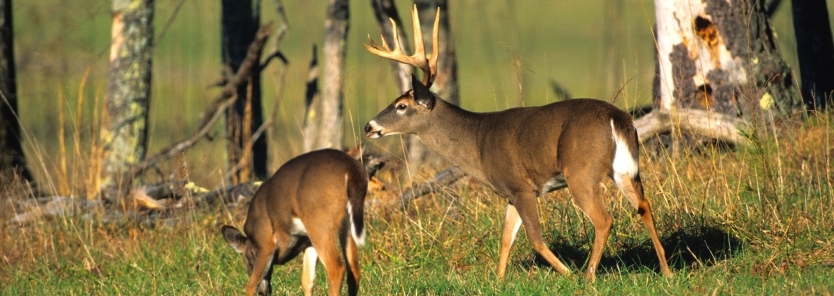Knowing the social structure of the herd during the time you intend to hunt is a key to getting calls, decoys or scent to work for you. In the “whitetail world” the time during early season (typically late August through October) is all about being social with other deer. However, they may not be social with the specific deer that you might think. For the most part, until the rut kicks into the next gear, whitetails are primarily social within their own sex groups. You may see them feeding side by side in a food plot or agricultural field, but predominantly bucks are social with other bucks (maybe in a bachelor group), and doe/fawn family groups are social with other does and fawns. Testosterone will change things soon, but for a short while during early season this is the case.
Contrary to what some say, it’s the does that dictate when breeding will actually take place and bucks will remain social with other bucks until the does exhibit the first signs of coming into estrus. Knowing this to be true, during early season it makes sense to use social buck vocalizations to call bucks and doe or fawn communications to appeal to other does and fawns. For decoys, use a small buck decoy to appeal to other bucks and doe or fawn decoys to lure does closer. The same is true for scent – use “buck smells” to attract bucks and “doe/fawn smells” to attract does or fawns. This obviously is applicable only to “deer smells.” (Scents that actually come from deer, like urine, glandular lures or musk type smells) This is not the case for curiosity smells or food lures.
When it comes to older bucks, they may, or may not be social with the other bucks. Sometimes mature bucks can be isolated animals and they really don’t need this communal contact like younger bucks do. When dealing with mature bucks during early season, sometimes you want to portray a more aggressive stance, or play the “breeding scenario” earlier than you normally would. A mature buck may react positively to Special Golden Estrus during early season, but for any deer you would be better off with a curiosity scent like Trail’s End #307. The best news is that whitetails have different personalities and react to stimuli individually – so a tactic that doesn’t work on one deer may draw the next buck in like he’s on a string







